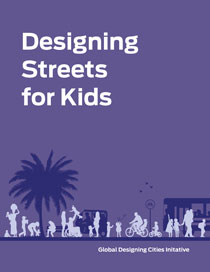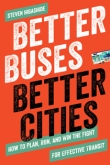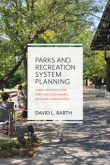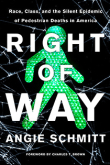Making a city that works for children creates a city that better serves all of its residents across ages and abilities. Yet we have created unsafe street conditions for children in cities around the world. Every day, more than 500 children die in road crashes globally. The physical and mental health benefits of walking and biking are challenged by speeding traffic and unsafe pedestrian rights of way. Streets that are designed with the needs of children and their caregivers in mind have been shown to improve road safety, health, and quality of life.
Building on the success of their Global Street Design Guide, the National Association of City Transportation Officials (NACTO)-Global Designing Cities Initiative (GDCI) Streets for Kids program has developed child-focused design guidance to inspire leaders, inform practitioners, and empower communities around the world to consider their city from the eyes of a child.
The guidance in Designing Streets for Kids captures international best practices, strategies, programs, and policies that cities around the world have used to design streets and public spaces that are safe and appealing to children from their earliest days. The guidance also highlights tactics for engaging children in the design process, an often-overlooked approach that can dramatically transform how streets are designed and used.
From addressing the lack of mobility options to noise and air pollution, this graphics-rich guide will help to design better streets, and thereby better cities, for kids of all ages and their caregivers. Designing Streets for Kids provides both inspiration and application. By focusing specifically on children and caregivers, this book fills a significant void in physical urban design guidance.
"For too long, cities have ignored children's needs and wishes and allowed the car to reign supreme. The climate crisis, an epidemic of inactivity, and environmental degradation all add to the case for change. Designing Streets for Kids is a timely, comprehensive guide to creating safe, sociable streets and neighborhoods, making cities more sustainable and livable for everyone."
Tim GIll, author of "No Fear" and international expert on childhood development
"If you design a street that works for kids, you design a street that works for everyone. Designing Streets for Kids shows how cities can lead by design to improve the quality of life for people everywhere."
Janette Sadik-Khan, NACTO-GDCI Chair
"Urban design is the most important thing we can do to make streets safer for everyone. Using the design principles in Designing Streets for Kids, we can start today by building streets from a child's perspective."
Roberto Claudio, Mayor of Fortaleza, Brazil
"Safe streets are essential so that everyone in cities can have access to the same opportunities and the same quality of life. Designing Streets for Kids helps give our youngest residents and their caregivers the option to get around as safely and easily on foot, bus, or bike as anyone in a car."
Erion Veliaj, Mayor of Tirana, Albania
"Streets designed for the safety of children aren't just safer, they are the foundation of a city with less driving, less traffic, and less pollution. This guide lays the groundwork for all street users to have healthier, happier lives."
Gonzalo Duran Baronti, Mayor of Independencia, Santiago de Chile, Chile
Introduction
Forewords
A Word from Our Chair
About the Guide
Streets for Kids Around the World
Global Influences
Section A:
1 Focusing on Kids
1.1 Fundamentals of Child-Friendly Streets
1.2 Children and Caregivers as Street Users
1.3 Early Childhood Development
1.4 Children's needs from Streets
1.5 Global Health Crisis
1.6 Identifying Challenges
1.7 Thriving in Cities
1.8 Ten Actions to Improve Streets for Children
Section B:
2 Designing at Multiple Scales
2.1 Working Across Scales
2.2 Planning Streets for Kids at the City Scale
2.3 Neighborhoods for Walking
2.4 Neighborhoods for Cycling
2.5 Neighborhoods for Transit
3 Street Design Strategies
3.0 Street Design Strategies
3.1 Upgrade: Meet Basic Needs
3.2 Protect: Design for Appropriate Speeds
3.3 Reclaim: Allocate Space for People
3.4 Activate: Incorporate Play and Learning
3.5 Extend: Integrate Adjacent Spaces
4 Transforming Streets
4.0 Different Street Types in the City
4.1 Streets near Key Destinations
4.2 Neighborhood Streets
4.3 Commercial and Mixed-Use Streets
4.4 Thoroughfares
4.5 Special Conditions
4.6 Intersections
5 Street Design Elements
5.1 Pedestrian Crossings
5.2 Sidewalks
5.3 Pause and Play Spaces
5.4 Seating
5.5 Play and Learning
5.6 Nature and Landscaping
5.7 Transit Stops
5.8 Cycle Infrastructure
5.9 Cycle Facilities
5.10 Additional Elements
Section C:
6 How to Make Change Happen
6.1 Build a Plan for Implementation
6.2 Work Together with Multiple Stakeholders
6.3 Engage Children and Caregivers
6.4 Engagement Tools and Methods
6.5 Demonstrate Possibilities
6.6 Temporarily Open Streets for Kids
7 Scaling Up
7.1 Take a Comprehensive Approach
7.2 Update Policies
7.3 Integrate Land Use and Mobility
7.4 Launch Effective Programs and Initiatives
7.5 Allocate Funding
7.6 Measure Impact
Resources
Acknowledgments
Notes
References
Appendix A | Conversion Chart
Appendix B | Making a Strong Case for Children
Appendix C | Include Children in All Policies and Plans
Appendix D | Examples of Metrics















